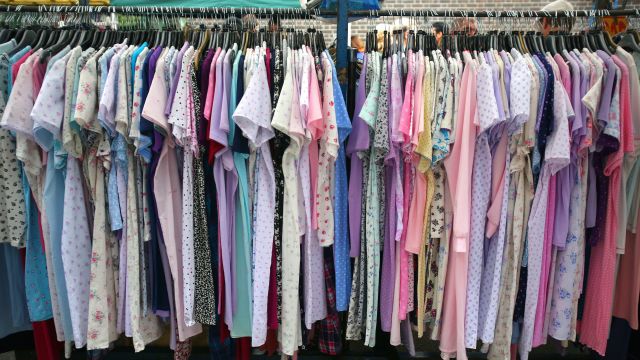These small pieces of plastic, which are less than 5mm in length, are shed from clothing during washing.
Scientists say while plastic pollution in the ocean has received a lot of attention in the recent years, evidence shows synthetic fibres are also accumulating in terrestrial environments.
This is because when the water used to wash clothes flows to a wastewater treatment plant, the microfibres retained in the sludge can end up in cropland or buried in landfills.
The researchers say their findings, published in the journal Plos One, indicate yearly microfibre emissions to landfill and other terrestrial environments are now exceeding the amount (167,000 metric tons per year) that enters waterbodies.
Around 14% of all plastic is used to make synthetic fibres, which mainly include clothing.
To understand more about how plastic fibres end up on land, the researchers looked at the data on how plastic is made, consumed, and then shed around the world.
Since wastewater treatment plants don’t necessarily reduce emissions to the environment, our focus needs to be reducing emissions before they enter the wastewater stream
This incorporated looking at the amount of microfibres released during washing both by machine and by hand, and the consequent accumulation and distribution of the pollutants in wastewater treatment plants.
Results showed around 5.6 million metric tons of synthetic microfibres were released from clothes washing between 1950, when nylon and polyester fabrics started to become popular, and 2016.
Around half of these emissions occurred in the last 10 years, the researchers said.
Around 1.9 million metric tons of the pollutants have ended up on cropland while 0.6 million metric tons have gone into landfills.
The rest (around 2.9 million metric tons) have ended up in waterbodies.
The researchers say that with emissions growing 12.9% annually, more needs to be done to reduce plastic fibre pollution.
Lead author Jenna Gavigan, from the University of California at Santa Barbara in the US, said: “Large-scale removal of microfibers from the environment is unlikely to be technically feasible or economically viable, so the focus needs to be on emission prevention.
“Since wastewater treatment plants don’t necessarily reduce emissions to the environment, our focus needs to be reducing emissions before they enter the wastewater stream.”







